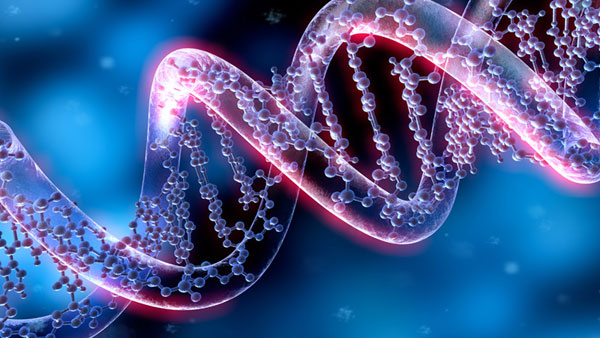Understanding the Psycho-Biological Effects of Ancestral Inherited Traumatic Memory Patterns

An Introduction To The Science of Epigenetic Medicine
The science of Epigenetics is the study of the bi-directional interchange between heredity and the dynamic interactions of our unique psychobiology. This branch of medicine examines the modulations, communication and coordination of ‘messenger molecules’ that contribute to ‘switching’ genes on and off.
Historically, the universal belief was that genes exclusively control our biology and that DNA was the sole determiner of who we are—not just our eye color or racial origin, but also habitual predilections, emotional disorders, and susceptibility to diseases. Currently, science has demonstrated that this prevalent conventional theory is a fundamental misconception—DNA is not the singular determiner that controls the cell’s life.
Living systems are neither pre-set nor static, but rather, are in a constant dynamic state of adaptation and adjustment. Current research studies cite that the regulation of specific gene expression may be more influenced and remediable than previously thought possible—demonstrating that we are not passive victims of our genetic inheritances but rather interactive participants.
Scientific evidence reveals that even though genes are the formative molecular blueprints utilized in the construction of cells, tissues and organs, our DNA is not the initiator of these sequenced commands. Rather, it is the cell membrane’s sensitivity and perception to environmental cues and informational signals that are the triggers.
It is the DNA codes, working in concert with the cell’s membrane receptor sites, that selects the activation of specialized genes. More precisely, targeted genes are stimulated specifically as an interactive response. Current studies state that genetic mutations are not random or capricious, but rather are expressed in precise predetermined pathways in direct response to informational signals.
The human body is an interconnected network of information systems—genetic, hormonal, immunological—that communicate in specific signature codes. To transmit the accurate information between systems necessitates a specific transducer allowing the signature code of one system to be translated into a reliable readable code of another system.
Ancestrally inherited traumatic memories are also coded information signals. These coded signals can adversely influence the extensive network of cellular communication that is distributed throughout the body. These traumatic memory imprints produce minute repetitious changes in energy pathways that affect organ systems, cells and DNA. These inherited ‘molecules of memory’ can impact genetic expression by encoding misinformation that affects the physiology of all biological functions.
It is in this context that examining transgenerational inherited traumatic memory patterns may be an important missing link in understanding the nature of cellular communication. The future identification of acquired epigenetic markers, like methylation and histone modifications, may be the means by which ‘molecules of memory’ are passed on from one generation to the next.
Current scientific framework views the genome as flexible, fluid and responsive to the environment in ways that were previously unknown. Gaining a more comprehensive understanding how these factors impact the working of the genome has far-reaching implications in developing new approaches to deciphering the codes of genetically inherited conditions.
The Genetics of Ancestral Inherited Traumatic Memory Patterns

Current research documents that transgenerational inherited trauma can be encoded into the psychobiology of chronic, degenerative, incurable and life threatening conditions. Inherited traumatic patterns that occur in parents, grandparents, great-grandparents and beyond can be passed on through multiple generations and have bearing on current gene expression. These inherited ‘traumatic memory molecules’ can influence genetic composition and biological predispositions.
Trauma is the psycho-biological response to horrific life events such as: accidents, natural disasters, injury, war, illness and so much more. The history of humanity is defined by trauma. Every person’s personal timeline and ancestral genealogy is strewn with cumulative traumatic events to varying degrees and intensities. It is not if traumas have happened, but rather, how many and to what extent their impact defines a lifetime. Ultimately, it is the degree of adaptation and assimilation of these traumatic experiences that defines the physiological impact on biological systems. The cumulative effect of impactful life issues are referred to as negative stress factors. Each individual, given their unique biological constitution and environmental conditions, navigates the amount of negative stress load in the body-mind differently.
Cumulatively, the body-mind reflects the sum total of our psychogenetic inheritance. These traumatic encoded patterns of pain, conflict and repression are like ‘neural software,’ running preset programs influencing every cell, organ and system—transforming negative stress responses into body chemistry. This is the ‘chemistry of consciousness’ that converts the invisible world of memories and thoughts into the visible effects in the body.
It is well documented that the etiology of 90% of all diseases is the result of negative stress factors. Traumatic experiences imprint memory patterns in every cell via stress hormones of the hypothalamic-pituitary-adrenal axis. This is one of the means by which mental-emotional experiences transform into psychosomatic conditions.
Additionally, evidenced–based studies conclude that inherited traumatic memory patterns are also encoded within the limbic-hypothalamic systems and act as filters which control and modulate the mind-to-body communication pathways. These encoded ‘messenger molecules’—neurotransmitters, hormones, immunotransmitters, proteins, enzymes and more—regulate the autonomic, immune, endocrine and neuropeptide systems and other structures. Traumatic ‘memory molecules,’ like ‘messenger molecules,’ influence and define the expression of our psycho-genetic blueprint.
Further research has shown that the evolution of DNA is functionally designed for the purpose of biological information storage. The human genome consists of approximately 3% of coding genes like eye color and racial origin, leaving 97%, of our genes to be noncoding in nature. Researchers have labeled these 97% noncoding genes as ‘junk DNA’. This is the area that is most important to pursue in therapeutic treatment research today, determining how ancestral traumatic inherited memories are transformed into bio-chemistry.
The art of medicine, using the tools of science, urgently need to study disease patterns at a deeper and more comprehensive level of causation. Transgenerational inherited traumas convert into emotional, mental and physical negative stress responses that strain the body’s chemistry and adversely impact immunology, neurophysiology, endocrinology, psychology and more. This deeper investigation may uncover previously undetected linkages that may unravel current roadblocks to treating many diseases. In the future, differential diagnosis of disease may be accurately assessed and measured by the discernible effects of inherited psychogenetic patterns.
The clinical challenge today is to build the bridge converting traumatic ‘memory molecules’ into regenerative ‘messenger molecules,’ through new treatment options that contribute to reversing degenerative genetic patterns.
ABOUT THE AUTHOR

Cheryl A. Malakoff, Ph.D., has been a teacher, therapist and student of many classical therapeutic models and spiritual traditions for over forty-five years and has relentlessly pursued the most effective teaching and treatment methods to restore optimum wellbeing. In addition to being trained as a traditional Doctor of Psychology, she has extensive and advanced training in energy medicine methods and treatment systems. These include over thirty years of experience with the Transformation Lessons—a pioneering method of movement communication that activates and deepens special abilities inherent to the human-spiritual template, radiesthesia (remote/distance conveyances), meridian therapies (Emotional Freedom Technique) and kinesiology, as well as epigenetics and psychoneuroimunology (the study of the interaction between psychological processes and the nervous and immune systems of the human body).